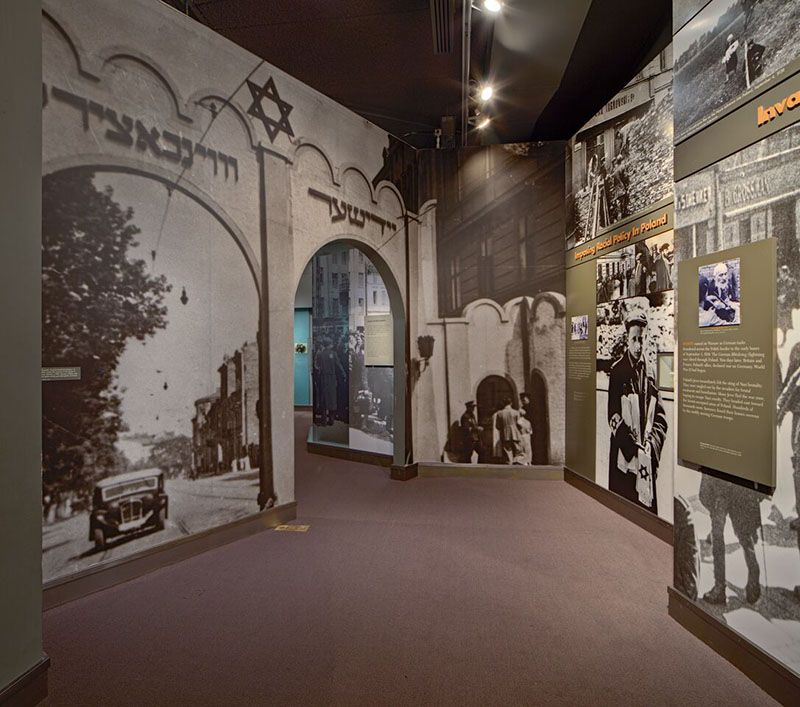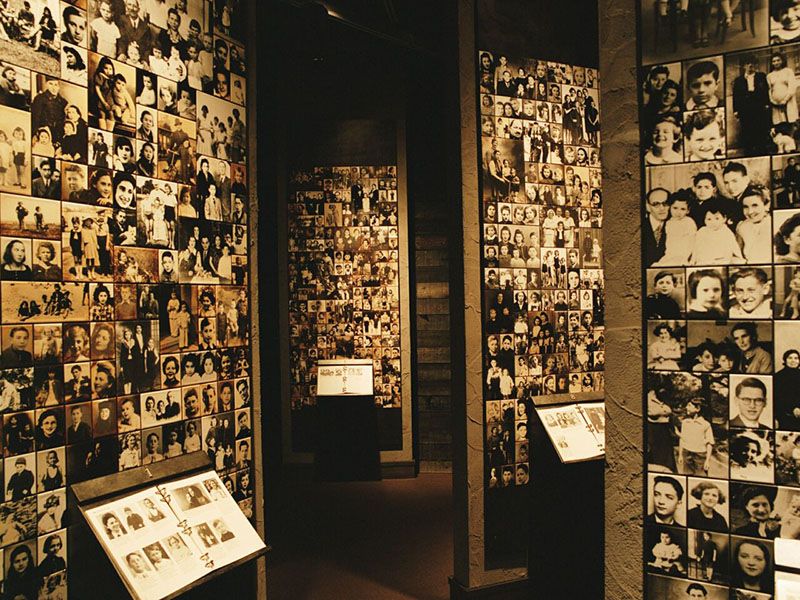Last-Minute NYC Holiday Gift Guide 🎁
We’ve created a holiday gift guide with presents for the intrepid New Yorker that should arrive just in time—


The Museum of Jewish Heritage–A Living Memorial to the Holocaust may be one of the lesser known monuments to Jewish history in New York, but it is a potent one.
From the Lower East Side to Brooklyn, from Milton Berle to Jerry Seinfeld, Jewish people are fundamental to New York City’s image of itself. With a population of 1.1 million, Jews make up about 13% of the city’s population, but their influence through figures like Robert Moses, Michael Bloomberg, and Woody Allen testifies to a far larger impact than numbers would indicate.
The city’s museums and cultural attractions bear this out too. The Jewish Museum celebrates the culture of Jewish people around the world through fine art, antiquities, mass media, and Judaica. Several of the Tenement Museum‘s tours celebrate Jewish life on the Lower East Side telling the stories of kosher butchers and sweatshop workers like the Levines and the Rogarshevskys. Alongside these sites, the Eldridge Street Synagogue, Katz’s Deli, and Russ and Daughters all function as living testaments to Jewish history.

Credit: Melanie Einzig
While these New York City institutions celebrate the immigrant history of Jewish people in America, the trauma of the Holocaust is, in many ways, the central narrative of Jewish museums worldwide. Concentration camps like Auschwitz, Theresienstadt, and Treblinka are open to the public as monuments to the industrialized horrors of the Final Solution. The Anne Frank House in Amsterdam, Yad Vashem in Jerusalem, and the United States Holocaust Memorial Museum in Washington, DC construct a global network of testimony to what happened in Europe in the 1930s and 1940s. These sites join museums and historic districts in cities like Warsaw, Vienna, and Prague whose rich traditions of Jewish life were decimated by the Nazis.
Building on all of these traditions comes the Museum of Jewish Heritage in Battery Park City. When it opened in 1997, there were questions as to whether we needed another museum dedicated to the Holocaust when the one in DC is so exemplary. There were also questions about why we needed this kind of institution specifically in New York. However once it opened, the museum’s investment in the life of Jews before and after the Holocaust, rather than simply their deaths in concentration camps, was regularly praised.
The first floor of the permanent exhibition—“Jewish Life a Century Ago”—begins by describing and displaying the rituals and traditions which have defined Jewish people throughout the world whether they resided in the Middle East, South America, North America, or Eastern Europe. The exhibits argue that what ties Jews from such disparate places together is religion as much as ethnicity. Despite the secularism of many Jews throughout the world, a secularism that dates to as early as the turn of the last century, it is the Torah that connects them. It is Hebrew that connects them. This is a strategic choice that unites a global community through religious heritage, but it runs the risk of shortchanging the secular traditions in languages like Yiddish, Ladino, and English that equally define who Jews are ethnically and culturally.

Credit: David Paler / Museum of Jewish Heritage
Moving through artifacts like the Steinberger Sukkah from Hungary, an Egyptian marriage contract written in Hebrew, Aramaic, and Arabic, and a movie poster advertising The Cohens and the Kellys, the first floor concludes by exploring how Jewish identity was understood as people moved out of the shtetls and into the cities, both escaping anti-Semitism and being met by it again and again. The museum traces the professionalization, industrialization, and idealism of Jewish people who suddenly found themselves in new countries, speaking new languages, working towards new opportunities. The last room of this first floor offers four resolutions to the problem of how to be Jewish in the early 20th century: orthodoxy, socialism, Zionism, and liberalism. Yet while here it articulates these four ways of being Jewish, it is American secular liberalism and Zionism that promises a return to Israel that are portents of how the community might precede after the genocide we know is coming.

Credit: David Paler / Museum of Jewish Heritage
As we ride the escalator upstairs, we come to the second floor which is titled “The War Against the Jews.” Much of this is a standard recounting of the horrors of the Holocaust—the Nuremburg Laws, the ghettos, the concentration camps, the Final Solution—but it is no less moving for being familiar. As in other sites, the power of these exhibits and these artifacts—identification cards from Austria and Germany stamped with a “J”, postcards from inside the ghettos and camps, a uniform from Auschwitz—comes from how the individual, human stories speak for the millions upon millions of lives that were erased.

Credit: SOTA Dzine
What is equally striking about the museum, though, was the power with which it situates these events in the ideology of racism in Nazi Germany throughout the 1930s. While making an argument that Hitler was responsible for the ascension of white supremacy, the museum shows the complex ways in which that ideology pervaded every aspect of German society and every aspect of young people’s lives. On display are children’s books and stereoscopic viewers and a board game that invited Germans to rid their country of Jews. These objects seem to implicate real people in the racism that resulted in the deaths of six million. There is no discussion of Hitler’s willing executioners, but the banality of evil is palpable here.

Credit: Melanie Einzig / Museum of Jewish Heritage
The third and final floor, “Jewish Renewal,” celebrates the revitalization of Jewish culture after World War II, primarily in the United States and Israel. This is a standard narrative, but it needs to be troubled. If, as the museum declares, “the horror of the Holocaust brought with it insight into the dangers of intolerance—and a unique responsibility to fight it,” we must question the Israeli commitment to Palestinian rights in the territories of the West Bank and the Gaza Strip. As the museum does, we can and should praise feminist Haggadahs, the cultural hyrbidity of Matisyahu, and Jewish solidarity with the victims of genocide in Darfur. But what does “never forget” mean when this narrative is so selective, so willing to ignore injustices committed in the name of a Jewish state?
The Museum of Jewish Heritage does a remarkable job of telling a long history that is both catastrophic and comic, tragic and triumphant. It is the backdrop to Jewish New Yorkers like Berle and Seinfeld, like Moses and Bloomberg. But museums show us where we are going as much as where we have been. They show us what matters to our communities. They show us how to be citizens in our cities and in the world. There is more work to do to repair the world. There are more people to be included in this society. But our foundation is here. Our history is here.
Next, check out a hidden Holocaust Memorial on his courthouse in the Flatiron District and check out Five Wars, Five Avenues: 1776 to 1965.
Subscribe to our newsletter